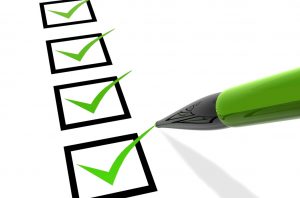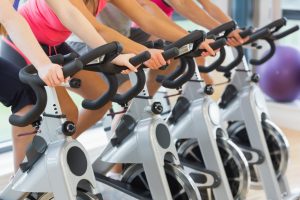Von Collins is an accomplished triathlete and endurance cyclist, and the author of four fitness and training books: Smarter Running, Your First Triathlon Guide, Fit Foods, and 30 Rut-Busting Workouts. He has been cited as a triathlon, cycling, and fitness expert by Healthline, CNET, Forbes, Eat This, Not That and other major outlets.
Let’s set the stage: You signed up for your first triathlon, and the reality is now setting in that you have to actually be in race shape in just a few months. Whether you are a couch potato or a workout warrior, getting both physically and mentally ready for your race is a fun and enjoyable experience. Being a first-time triathlete is an experience you will only have once, so make the most of it and enjoy it. Easier said than done, we know.
The popularity of triathlon has been growing steadily ever since it appeared in the 2000 Olympic games, with people training for everything from their first Sprint to an Ironman or destination race. We discuss more detailed first-time training plans, tips, and guidance in our eBook, Your First Triathlon Guide, but here is a summary to get you started.

Set Your Goals
The first thing you need to do when signing up for a triathlon, or any athletic event for that matter, is determine what you want to get out of it. Is your goal to finish a triathlon and be done? Is this a way for you to lose 15 pounds? Or perhaps your first triathlon will simply be the first of many. Do you want to be a podium finisher? Or perhaps you simply want to inspire your family and friends by persevering through a race, regardless of your time. Whatever the case, figuring out what your goals are is Step 1 and will determine many factors in your training plan.
Determine your starting point
Your starting point is essentially where your fitness level is today. For some, this means that you are new to working out and will be focused on the basics of fitness. For others, you may be an avid cyclist or runner who understands the fundamentals of training and wants to transition to multi-sport. Knowing your starting point will determine your training plan as well as provide a good idea of how quickly to ramp-up your intensity.
Obviously, the more advanced your starting point the deeper you can get into the training. Having some base to work from is a big plus, regardless of if it is in swimming, biking, running, or just general fitness. But that should not keep newbies out of the sport — often times, the couch-to-finisher stories are the most inspiring, and you will find many newbies at every single race.
Get the Basic Gear
Triathlon gear can vary from very basic and borrowed, costing nearly nothing, to very expensive and a major investment. Where you fall in that spectrum depends largely upon your budget and if you plan to do many multisport races are just one. In terms of the most basic triathlon gear required in order to finish a race, you will likely want to find a good quality bike if you don’t have one already, some good workout gear such as running shoes, and perhaps some triathlon apparel. That may include triathlon shorts or a singlet, and perhaps a wetsuit if you plan to swim in colder water.
Know that you don’t need to spend a lot of money to complete a triathlon, but if you intend to do longer distance such as a half ironman, or if you intend to compete in multiple races, investing in quality early on may actually save you money in the long run. In addition, you typically get what you pay for in terms of performance and comfort. We think that most new triathletes will be thankful for spending up to the mid level instead of going completely entry-level on everything. Unless you are doing a longer race, though, you probably don’t need to go high-end unless you happen to have the budget for it.

Train
Training is the most important part of all of this, and the only ingredient whereby if you don’t do it you likely cannot race. The good news is that as long as you have about 100 days or more to train, you can easily get in shape to do a sprint triathlon. The finer points of your training plan will be dictated by your goals and your starting point, but for the most part it will fall into three phases: First is basing, which consists of putting mileage on and getting your muscles in workout mode. The next phase is endurance build, which focuses on adding both mileage and speed work to your routine. Finally, the peak phase gets you both mentally and physically ready for race day.
If you have not started basing, or are doing a couch-to-tri plan where this event will be your first real activity in a while, start slow! Consult your doctor to make sure your body is ready for a different regimen, and then ease in to it. Sure, you want to run, bike and swim as part of your training, but don’t overlook HIIT workouts and classes too. All can help improve your cardio function.
A good training plan will make your race a fun and enjoyable experience. It all starts with having a good plan that incorporates general fitness, triathlon-specific swim training, cycling stamina, and steady running. As you train, note that you will want to monitor your progress, speed, duration and intensity in order to get the best results. We recommend a simple wearable that has GPS — such as a Garmin watch or Fitbit — to help make sure you are not over-or-undertaining.
Consider a Coach
If you are the type of person who responds to coaching, or someone being at your side and supporting you, consider getting a coach. You can find one locally, or you can use a virtual coach who will monitor your progress, work with you when needed from afar, and provide the real-time support you are looking for. We profile some of your options in our training plan guide — everything from high-end coaching to more virtual ideas.
At a minimum, consider enlisting the help of a friend who has done a few races to help show you the ropes, and check back often here at Complete Tri as we will help guide you through the process.
If you are doing your first triathlon, congratulations and welcome to our sport! With a little planning and preparation, you will make it an experience to remember.
Von Collins is a longtime triathlete, coach, writer, and the author of Your First Triathlon Guide and other fitness books.







